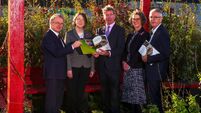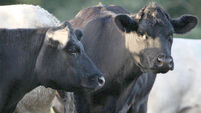Milk incentives promised by Dairygold
“A means of ensuring that whatever is put in place is fair to the farmer will obviously be required”, said Chief Executive Jerry Henchy last week, addressing the Irish Grassland Association conference in Limerick.
He envisaged differential pricing, or price penalties for excess milk at the peak supply time in May, with bonuses for suppliers who follow the extended grass production model of spring and autumn calving promoted by researcher Seamus Crosse of Teagasc’s Moorepark staff.
“In this era of decoupled direct payments to dairy farmers we have to get to a situation whereby milk is produced as far as possible in response to market needs.”
“We have to maximise the match of supply to demand, whilst not throwing out the advantages of milk from grass”, said Mr Henchy.
He said it makes economic sense for the dairy farmer to maximise milk output in the lowest cost of production periods, but it is not without its costs to the industry as a whole. “The seasonal supply glut of raw milk forces the processors to look at converting this milk into primarily longer life commodity type products. This produces a lower return”, he explained.
“The seasonality peak also results in costs associated with under-utilised plant capacity in the off-peak periods. As the industry re-examines itself and, to a limited degree, is looking at re-investing in its processing plants, this creates enormous capital issues”, he said.
He told the Grassland Association conference that Ireland enjoys a competitive advantage in the production of milk over most northern European countries, compared to mainly grain-fed systems used in continental EU countries.
The pasture-based feeding system also had the advantage of being able to be portrayed as a more natural benefit for dairy cows and milk production.
But the dairy industry must look at ways of shifting some of the summer peak supply onto the shoulder periods at either side of the peak, said Mr Henchy.










